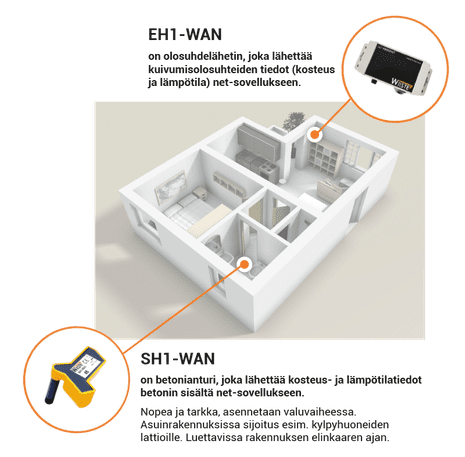Production
Data is transferred over the LoRaWAN network
To transmit data from Wiiste's IoT sensors to the Relia cloud service, a LoRaWan network is used instead of the internet.
LoRaWAN is better suited for our IoT solutions than the internet. Its advantages include:
- Reliability – good radio coverage even over long distances while keeping power consumption to a minimum.
- Information security – based on encrypted data transfer, which is implemented in three different layers of the network.
- especially suitable for fast transfer of small amounts of data up to tens of kilometers away
LoRaWAN devices are in a network completely separated from the internet. They do not use the IP protocol.
The LoRaWAN protocol allows for asynchronous data transmission, meaning data is only sent when needed. This extends the battery life of the sensors, which can be up to 10 years.
LoRaWAN can track mobile sensors as they move from one location to another. In many applications, location information can be determined with sufficient accuracy without GPS positioning.
The terminal device, application and radio network have their own unique encryption keys that ensure secure data transfer between the sensors and the server.
LoRaWAN uses unlicensed radio frequency bands below gigahertz for LPWAN communications between sensors, routers connected to the network and cloud application servers.
LoRaWAN is a global and open standard that includes LoRa terminals and routers as well as the servers and applications running in the background.
LoRaWAN is a wireless LPWAN (Low Power Wide Area Network) network technology, the development of which is managed by the LoRa Alliance. The organization includes hundreds of players, for example Cisco, IBM and in Finland also Digita, which manages radio, TV and mobile TV networks with their transmission stations and masts.
Digita LoRaWAN coverage map

Data is transferred over the LoRaWAN network
Price list and terms of use
Price list
Terms of Use


